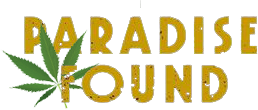Young adults in the United States that are using cannabis and hallucinogens spiked to reach “historic highs,” according to new federal research released this week.
The data from the National Institutes of Health found that the use of both pot and hallucinogens among individuals between the ages of 19 and 30 “increased significantly in 2021 compared to five and 10 years ago,” hitting the highest levels among the age group since 1988.
“As the drug landscape shifts over time, this data provides a window into the substances and patterns of use favored by young adults. We need to know more about how young adults are using drugs like marijuana and hallucinogens, and the health effects that result from consuming different potencies and forms of these substances,” National Institute on Drug Abuse Director Nora Volkow said in a statement on Monday that accompanied the study. “Young adults are in a critical life stage and honing their ability to make informed choices. Understanding how substance use can impact the formative choices in young adulthood is critical to help position the new generations for success.”
The data is part of the NIH-sponsored “Monitoring the Future” study, which has been conducted by researchers at the University of Michigan since 1975.
The latest edition of the “MTF” study found that, in 2021, “past-year, past-month, and daily marijuana use (use on 20 or more occasions in the past 30 days) reached the highest levels ever recorded since these trends were first monitored in 1988.”
“The proportion of young adults who reported past-year marijuana use reached 43% in 2021, a significant increase from 34% five years ago (2016) and 29% 10 years ago (2011). Marijuana use in the past month was reported by 29% of young adults in 2021, compared to 21% in 2016 and 17% in 2011. Daily marijuana use also significantly increased during these time periods, reported by 11% of young adults in 2021, compared to 8% in 2016 and 6% in 2011,” the study said.
The researchers said that past-year “hallucinogen use had been relatively stable over the past few decades until 2020, when reports of use started to increase dramatically.” Last year, it reached historic levels.
“In 2021, 8% of young adults reported past-year hallucinogen use, representing an all-time high since the category was first surveyed in 1988. By comparison, in 2016, 5% of young adults reported past-year hallucinogen use, and in 2011, only 3% reported use. Types of hallucinogens reported by participants included LSD, MDMA, mescaline, peyote, ‘shrooms’ or psilocybin, and PCP. The only hallucinogen measured that significantly decreased in use was MDMA (also called ecstasy or Molly), showing statistically significant decreases within one year as well as the past five years – from 5% in both 2016 and 2020 to 3% in 2021,” the study said.
The study indicated that alcohol and hallucinogens were far from the only vices that saw increased usage by young adults last year.
Binge drinking, which is defined as having five or more drinks in a row in the past two weeks, “returned to pre-pandemic levels in 2021 after significantly decreasing in 2020 (32% reported in 2021, versus 28% in 2020 and 32% in 2019),” according to the research.
Meanwhile, high-intensity drinking, which is defined as having 10 or more drinks in a row in the past two weeks,” was at its highest level since it was first measured in 2005, reported by 13% of young adults in 2021, compared with 11% in 2005,” the study said.
The study did, however, show “significant decreases in past-month cigarette smoking by young adults and non-medical use of opioid medications in the past year (surveyed as “narcotics other than heroin”) compared to 10 years ago.” Nicotine vaping, on the other hand, “increased significantly among young adults in 2021 despite leveling off in 2020 during the earlier part of the pandemic,” according to the study.
The post Study: Pot and Psychedelic Use Among Young Adults Reaches ‘Historic Highs’ appeared first on High Times.
